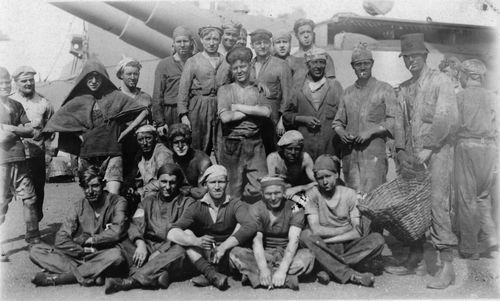Catalogue number 70045
HMS Benbow
HMS Benbow could take on 3,250 tons of coal as well as 1,600 tons of oil to be sprayed on the burning coal but the ships of the Iron Duke class, including Benbow, were the last coal-burning British battleships. The following Queen Elizabeth class carried 3,400 tons of oil and only 100 tons of coal, the advent of oil-fired boilers meant that refueling was less arduous and, eventually, could be carried out whilst underway. Note the ghostly faces and diverse garb of this coaling team from Benbow, also the wicker basket used to carry the coal.
13,3cm x 8cm Gelatin silver print
|
 |